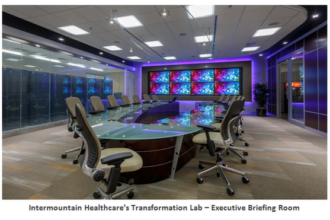Some years ago, I closed a lecture on medical education with a slide that posed this questions to the faculty:
What Medicine Are You Teaching?
Some years ago, I closed a lecture on medical education with a slide that posed this questions to the faculty:
What Medicine Are You Teaching?
- The Medicine You Were Taught
- The Medicine You Practice
- The Medicine Your Students Will Need to Know in 5 to 10 Years
 The medicine faculty members learned as medical students was probably five to 40 years out of date. Human anatomy hadn’t changed, and many of the diagnostic and therapeutic concepts were still germane, but the tools and maneuvers available to the physician had changed immensely. Their patients tended to be older, sicker, and chronically ill, with multiple physical and mild psychiatric disorders.
The medicine faculty members learned as medical students was probably five to 40 years out of date. Human anatomy hadn’t changed, and many of the diagnostic and therapeutic concepts were still germane, but the tools and maneuvers available to the physician had changed immensely. Their patients tended to be older, sicker, and chronically ill, with multiple physical and mild psychiatric disorders.
The medicine the faculty practiced was probably current but certainly likely not “evidence-based.” They may have idiosyncratically rejected “cookbook” medicine just as they rejected peer-developed protocol-based diagnosis and treatment in favor of their recollected experiences.
As for the future, many physician–scientists pushed the edge to create new knowledge, but years elapse between discovery and adoption (some studies estimate that, in academic medicine, the adoption of new practices takes 17 years). Most clinical teaching is by example of what can be done today and it isn’t put in the context of how diagnosis and treatment of the same condition might be done in five, 10, or more years as the promises of technology and drug development are realized.
There is technology available beyond the use of surrogate patients and simulation that can add immense value to undergraduate and graduate medical education and provide continuing medical education for all health professionals. Its many benefits include increased patient safety; reduced re-admissions; reduced operating room, procedural, and length-of-stay costs; reduced errors in diagnosis and treatment; and increased involvement of informed patients in shared decision making.
In a January 2013 Wing of Zock post, I urged you to learn more about an operational “Computer Augmented Visualization Environment (CAVE).” How can this technology be important to medical education? We know that the capabilities of imaging technology continue to advance. For example:
- MRI can provide spectroscopy of biopsy-sized specimens and fMRI enables study of brain function. Proponents envision a smartphone-sized MRI on the market in five years.
- Optical imaging provides non-invasive imaging of soft tissues and cells at the molecular level and above. It is intermodal and integrates well with other imaging modalities.
- Ultrasound is the bellwether of handheld office-based imaging devices. It is operable with minimal special training and available at a price that’s about the same as the cost of an individual ultrasound study.
With CAVE technology, the images captured by these technologies can be visualized and manipulated separately and sometimes together via “a novel and creative assemblage of FDA-approved, commercially available, diagnostic imaging components.” These components — software and projection devices that are readily available — are cheap in comparison to most imaging instruments. So when is medical education going to begin using visualization technology?
The single and multi-modality image visualizations are multi-dimensional and in color. They are easily manipulated, including separation of overlaying tissues, enable volumetric analysis (of tumors, for example), and offer a “fly through” capability for hollow organs and vessels. The images can be projected on a whiteboard, a surgical table-sized surface, a tablet, or a smartphone. A physician–student team can analyze the visualizations from all angles: 360-degree viewing is supported so that observers can see the “other side” of a chest wall or jaw, for example.
The CAVE can become a surgical “pre-flight” simulator: Treatment planning and the surgery itself might well be improved using this technology. The implications for training surgery residents, as well as for maintaining and further developing the skill levels of fully trained surgeons, are obvious. Perhaps less obvious, but ready to be discovered, are applications in virtually every medical specialty and subspecialty.
From a teaching standpoint, the patients are real; clinician and student users can make up their own “menu” of what and how they want to examine regions or tissues of interest; clinician/student teams can analyze and discuss the visualization and the patient’s medical record simultaneously; and, if desired, physician and student can discuss treatment alternatives with a patient while sharing the same information. The CAVE can be always accessible for student use and the visualizations can be transmitted to tablets and smartphones, wherever and whenever students and faculty choose. Let’s get started.







